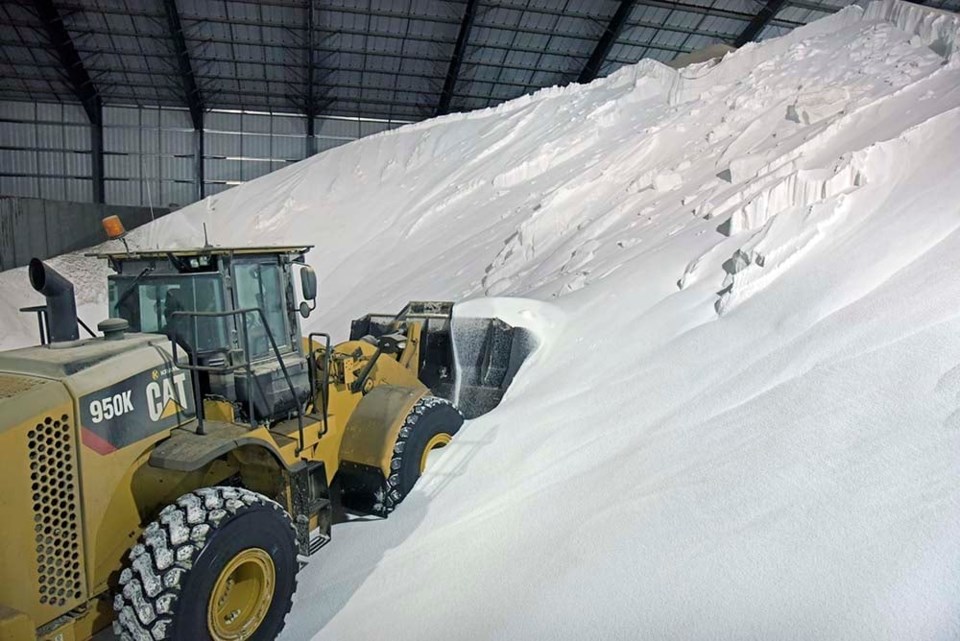BRANDON, Man. — The global market for urea is in a period of mixed signals.
Buyers in Australia and Southeast Asia made purchases in early January, putting upward pressure on price. Plus, stocks in North America are relatively low, which is also supportive of prices.
On the other side of the coin, China may delay exports until the second half of 2024 while domestic production within India has increased, exerting downward pressure on the global price, says a urea trader.
In the end, Canadian farmers don’t need to panic, but they should be buying urea in the next six weeks or so.
“Through all these mixed messages that is the urea market … I think you’ve got a little bit of time,” said Noah Bishop, the urea product line manager at ADM Fertilizer, who spoke at Manitoba Ag Days in Brandon Jan. 17.
“Market prices (for urea) have ticked up $30 to $40 in the last week. I don’t think they’re going to run away on us because there is no demand globally that is coming forward.”
As of mid-January, urea prices were around $700 per tonne at ADM terminals, Bishop said.
That’s up from late December and early January because of demand from Australia and elsewhere.
The spike in price is likely short-term, but nonetheless, Canadian farmers should think about buying sooner than later.
“I do think you … should have your 2024 spring nitrogen procured by the time we get into the middle of March, (when) we start to see the seasonal demand come at us,” he said during a fertilizer outlook presentation.
“Q2 (quarter two) typically … has higher prices than Q1. So, we will get some seasonal uplift to urea prices, probably beginning in March and into April.”
Last fall, an analyst for Argus Media had a similar take on demand for urea this winter.
Limited demand is going to be the key market factor over the next couple of months, Sophie Mason, manager of nitrogen analytics for Argus, said in late November.
During his presentation, Bishop explained that traders focus on a handful of key countries to gauge the global urea market.
“The big markets we pay attention to are Chinese exports, Indian imports, U.S. imports and exports and Brazilian imports,” he said.
“Once you look at those pieces … you look at over half the tradable urea market.”
The most important nations are India and China.
Combined, they consume 51 percent of the world’s urea and produce about 48 percent.
With China, their export policy can move markets because the government has the power to prohibit exports.
Right now, domestic prices in urea are relatively high compared to the global price — by about US $50 per ton. With that sort of premium, the Chinese government will curtail exports to keep the domestic price in check.
“Even though the Chinese urea is produced by private companies, the export licenses are issued by the Chinese government,” Bishop told the crowd at Ag Days.
Given the price spread, it’s unlikely that China will permit exports until the second half of 2024.
“I don’t expect a significant release or export of urea before April,” Bishop said.
“But once we get into the back half of 2024, I would expect the Chinese to start exporting urea again, which should lean on global prices.”
The Indian story is also about government intervention.
India imports more urea than it produces, and the government subsidizes the cost of fertilizer for Indian farmers. Further, a government agency is responsible for fertilizer purchases. It will put out a tender, for say two million tonnes of urea imports, and accept bids on the tender.
However, India is now importing less urea because domestic production has increased and imports are down from previous years.
“It’s my general expectation… that they are likely done tendering for this fertilizer year. We won’t see another Indian tender until March,” Bishop said, which should keep prices in check.
The wild card is that 2024 is an election year in India.
The government may over-buy fertilizer to maintain good relations with farmers, who are a powerful political force in India, Bishop added.
Yet another wild card is the mess in the Middle East.
Houthi rebels from Yemen have disrupted shipping through the Suez Canal.
The unpredictable situation could get worse and add shipping costs to fertilizer exports from the Middle East.
On Jan. 16 a Houthi missile hit a “dry bulk commodities ship, which was sailing towards the Suez Canal,” the Financial Times reported.
“The latest Houthi strikes have prompted more categories of ships to avoid the key shipping route through the Red Sea, instead taking a longer journey between Asia and Europe via the Cape of Good Hope.”
Bishop acknowledged that the Red Sea situation is problematic, but fertilizer traders have reacted.
“The market is trying to price in the worst case situation,” he said.
“The fertilizer market and some of these commodities markets are pricing in a higher risk of issues in that region.”
While urea prices should be stable this winter and possibly higher in the spring, the ammonia market looks softer in 2024.
Russia will soon re-enter the global ammonia market now that a Russian firm has built an ammonia export terminal on the Black Sea.
That will provide another outlet for Russian fertilizer and could impact global prices.
“There’s a pipeline that goes from the ammonia producing areas to Odesa. (It) got blown up at the beginning of the Russia-Ukraine war,” Bishop said.
“This new plant will allow them to resume exports…. So the supply situation is changing dramatically on ammonia.”
Canadian farmers may not see an immediate decline in retail prices for ammonia.
“Ammonia (there is) significant downward pressure globally,” Bishop said.
“If you could wait on purchasing your ammonia, it does seem like that price level will come on.”
Contact [email protected]

